It’s no secret to the regular reader that my favorite perennial is a heuchera. Disregard the fact that I have many favorite plants, and remember that heuchera (aka alumroot) is my Favorite. That’s right – with a capital “F.“
A major reason they’re my Favorite is because of how easy they are to care for over the winter.
Heucheras laugh at cold winds and freezing temperatures, and they taunt every blizzard that comes their way. In my experience, their best form of winter care is no winter care.

We link to vendors to help you find relevant products. If you buy from one of our links, we may earn a commission.
Let’s get into why alumroot maintains this status as the toughest perennial in the garden when it comes to the winter.
What You’ll Learn
This’ll be a quick one, lovely readers. Let’s get to it.
Heuchera Needs a Winter
One of the side effects of a plant having such tenacity in cold winters is that heuchera does poorly indoors or in a protected environment.

These plants are at their best when they have even a mild period of winter dormancy, and don’t do well when brought indoors for the winter.
Exceptions exist, and individual plants and certain cultivars might take well to a more protected environment. But in general, you want to ensure your alumroots are allowed to experience a legitimate winter for the easiest heuchera winter care.
Perfect Planting Makes for Easy Winters
Heuchera is one of those plants with a reputation for hardiness and ease of care, but it really only plays out in this fashion when it’s growing in the right conditions. Is that ironic? Maybe a little.
We have our heuchera growing guide available right here, but in a few words, this plant really only needs well-drained soil to prevent wet feet, and… I mean, that’s pretty much it.
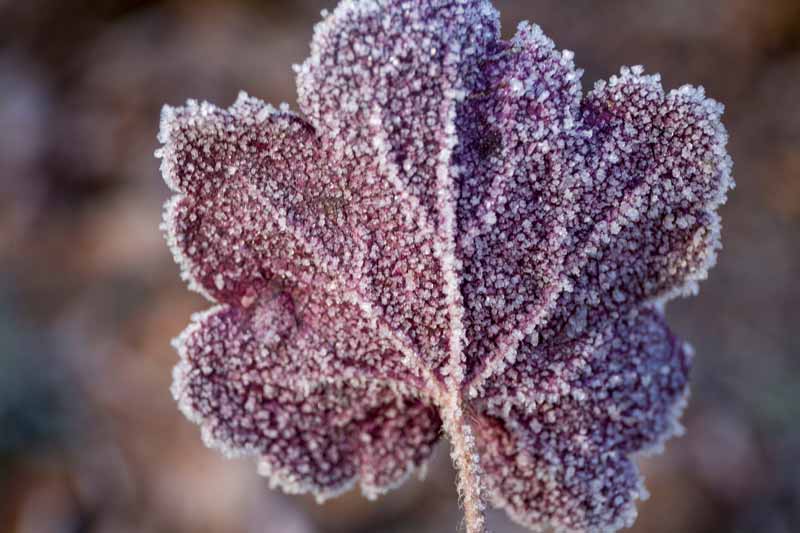
Most plants can tolerate sun or shade, although darker leaves tend to tolerate full sun better, while the lighter-leaved cultivars tend to prefer more shady conditions.
Ideal conditions for most types of heuchera are similar to what herbs are looking for.
Most of my best and prettiest heuchera are in the front yard, under a weak dogwood tree and growing in very rocky soil.
They’ve got too many companions, but have good airflow and space to discourage any fungal or bacterial issues.
Don’t plant your heuchera in rich soil and make sure they aren’t getting watered heavily, and you’ll have happy plants – and happy plants make winter care that much easier.
When and How to Cut Back
In my experience gardening in Philadelphia, heuchera should not be cut back as a step for winter care.
Any cutting back should be reserved as an early springtime project in Zones 4 to 7, and you’ll see why in the next segment.
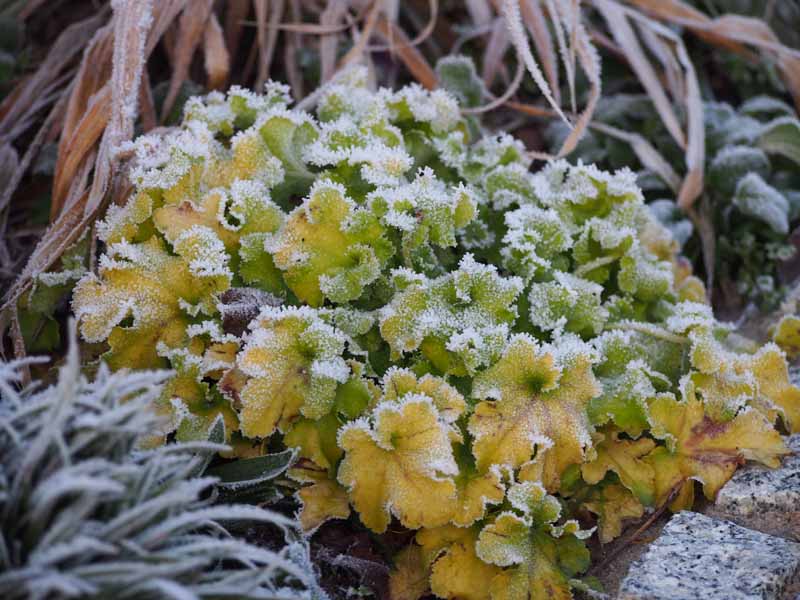
If you’re in these growing zones, you can continue reading this section to learn how to cut back your heuchera, but the when should definitely be springtime.
If you live in a warmer climate and have brief and mild winters, you can get away with cutting back your alumroot as a winter care project.
However, it’s likely you’ll have to remove some more material in the springtime as well, so feel free to keep these plants at the bottom of your list in terms of priority.
The process is identical for both seasons. Using a sharp pair of pruners or scissors, cut back any dead and crispy foliage to the crown. Ensure you’re leaving at least 75 percent of the foliage on the plant.
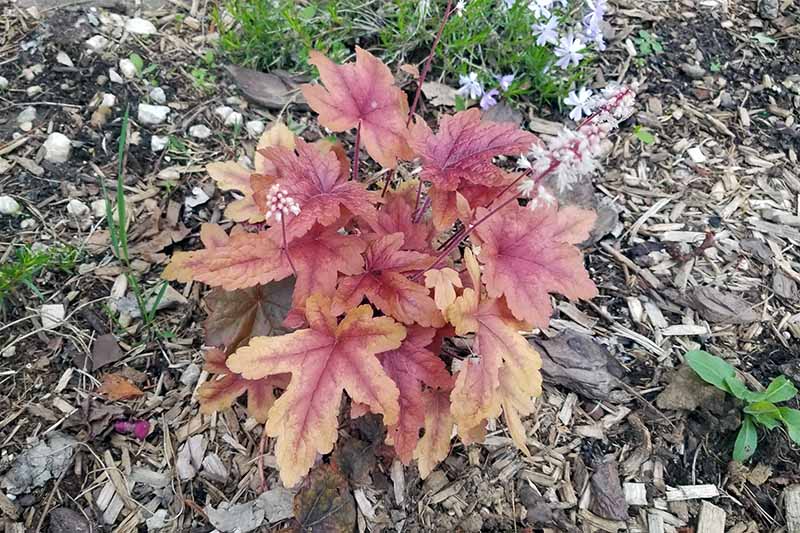
In the springtime, gardeners in both northern and southern growing zones have the same springtime chore: you go through your heuchera and snip and remove any “weak” or “tired-looking” leaves once you notice new growth forming on the plant.
This keeps your alumroot looking trim and tidy, and encourages them to branch out into denser and more lush plants.
I highly recommend saving any and all pruning until the springtime. You can do this as early in the spring as you like, and it’s an excellent project for getting your butt into the garden and getting your eyes on things early in the season.
Expert tip: cut back your heuchera, hellebores, and stonecrop all at the same time in your first seasonal bout of spring garden cleanup.
To Mulch, or Not to Mulch?
You don’t have to mulch your alumroot for winter care, but you can if you want to.
In the previous section, I recommend waiting to cut back the plants until the springtime, and that’s primarily because any dead or weak foliage protects your alumroot as a natural mulch over the winter.
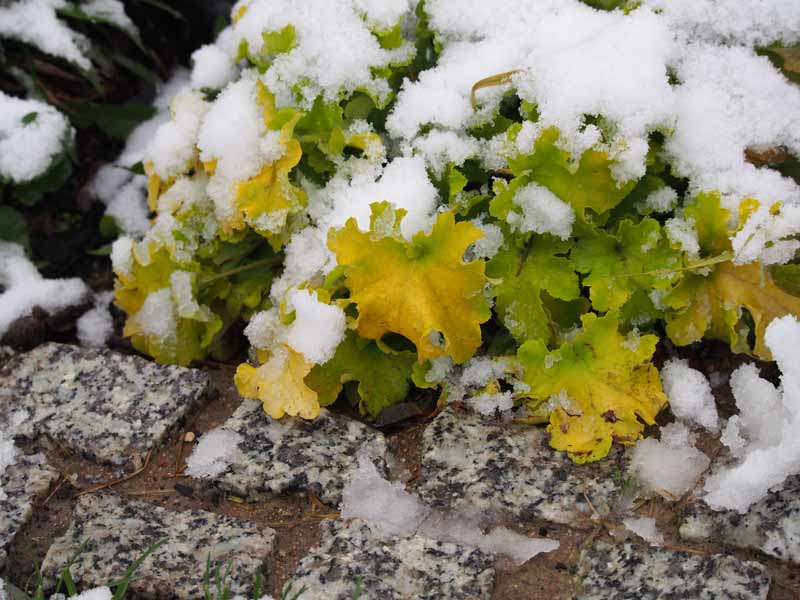
Philadelphia has chaotic winters, where every year is a little different than the one before, and the next one that’s coming.
In my experience, the existing foliage on your alumroot provides sufficient protection from whatever dangers winter can bring in your region.
However, you can mulch your heuchera for easier winter care, and it helps with the only mild annoyance that heuchera might give you over the winter:
Root heave.
The shallow roots of your average heuchera don’t provide much grip throughout the year, and as the ground freezes and thaws over the winter, your alumroots might simply pop themselves out of the ground, thanks to a shifting of the earth known as heaving.
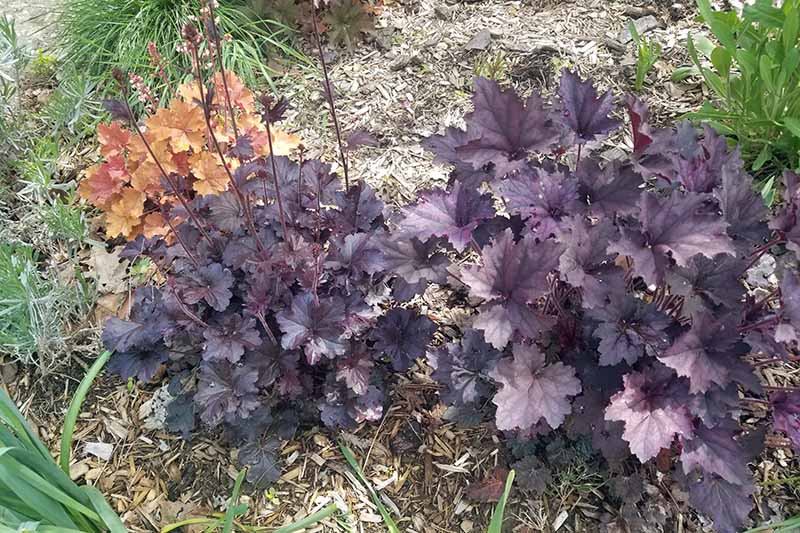
If I had a nickel for every time I’ve raked leaves from a garden bed and yanked out a few heucheras hiding in the leaves, I’d have a wheelbarrow full of nickels.
Mulching the roots with no more than three inches of a dry material like straw or leaves is all the care you need to provide. This is sufficient to protect the crown and roots of the plant, and will help to prevent it from heaving out of the soil.
Just remember where your plants are! Even well-protected alumroots have a tendency to go along for the ride if they catch an errant rake tine.
Do We Need to Fertilize?
Very simply, no, you don’t need to fertilize your alumroot in preparation for the coldest time of year.
A light layer of compost at most is sufficient for your plants to be at their best year-round. Too much fertilizer results in leggy plants.
Easy Care for an Easy Season
Heuchera winter care is pretty straightforward, but that doesn’t mean it’s easy for everyone to pick up on.
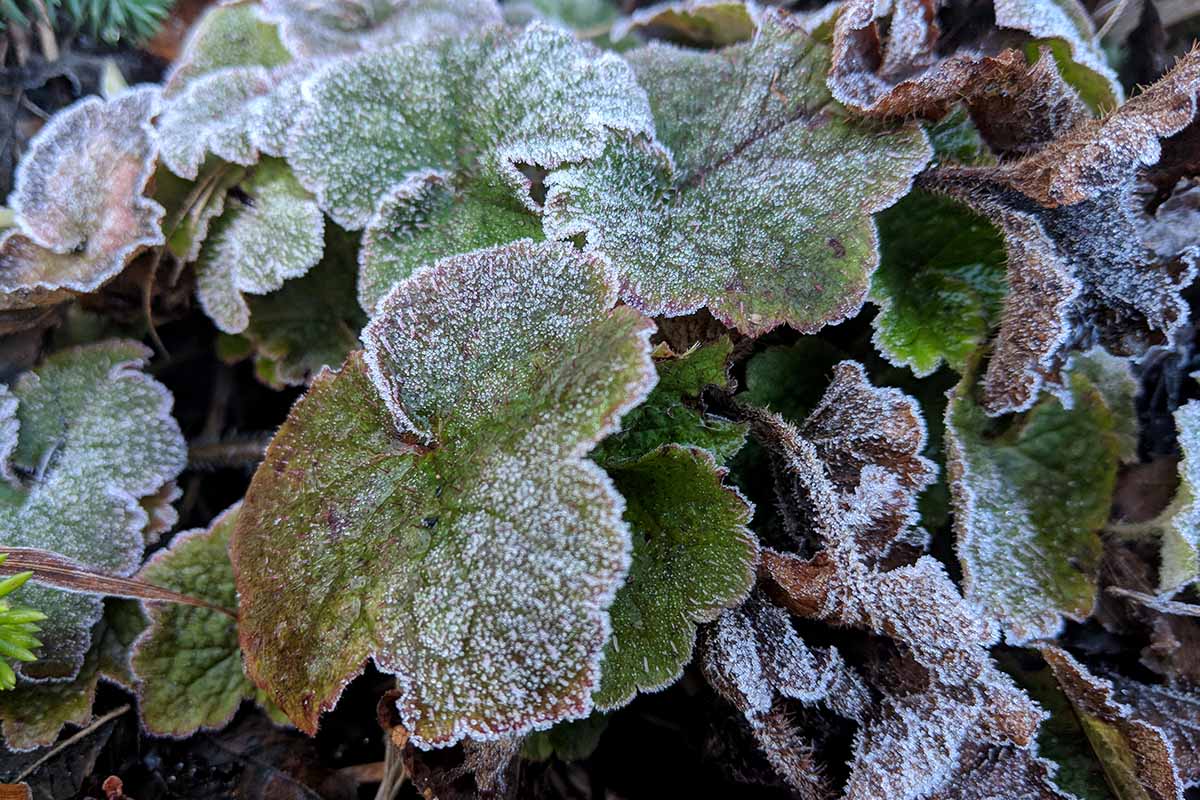
If you have any questions to ask or advice to share, drop us a line in the comments below!
And if you’re looking for other plants to make your winter garden care experience pleasant and easy, check out the following flower guides next:
I’m in zone 4 and my heuchera foliage froze last night. I think it got to 28 degrees. I should leave the wilted leaves until early spring?